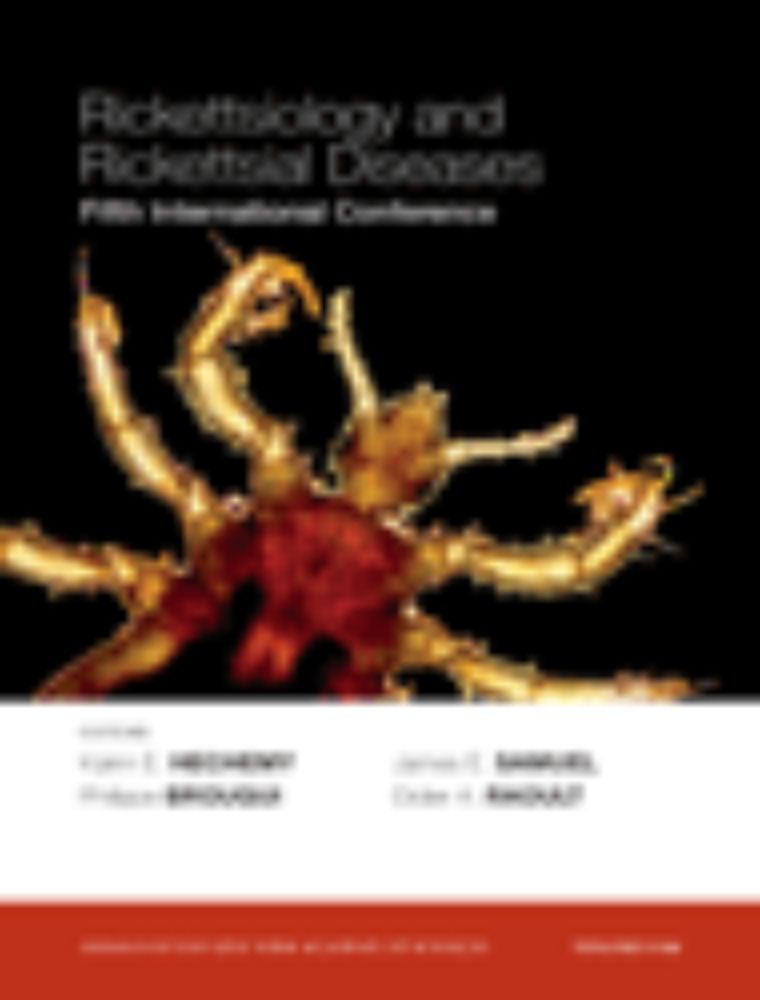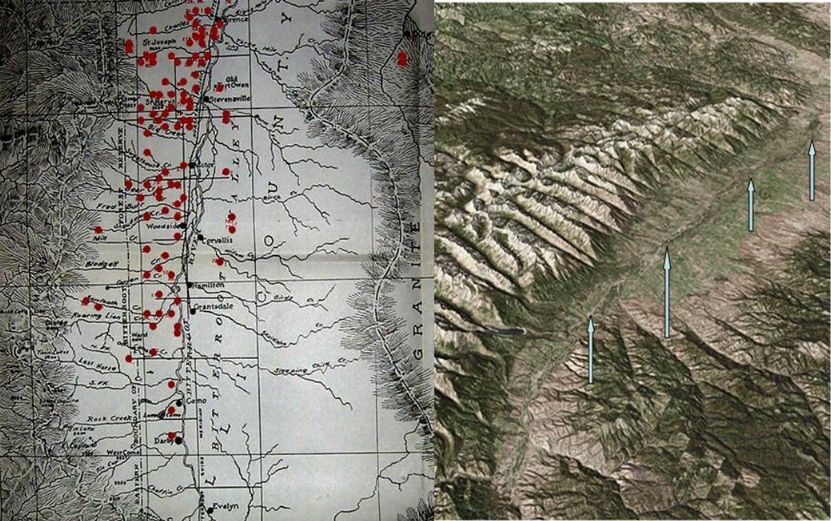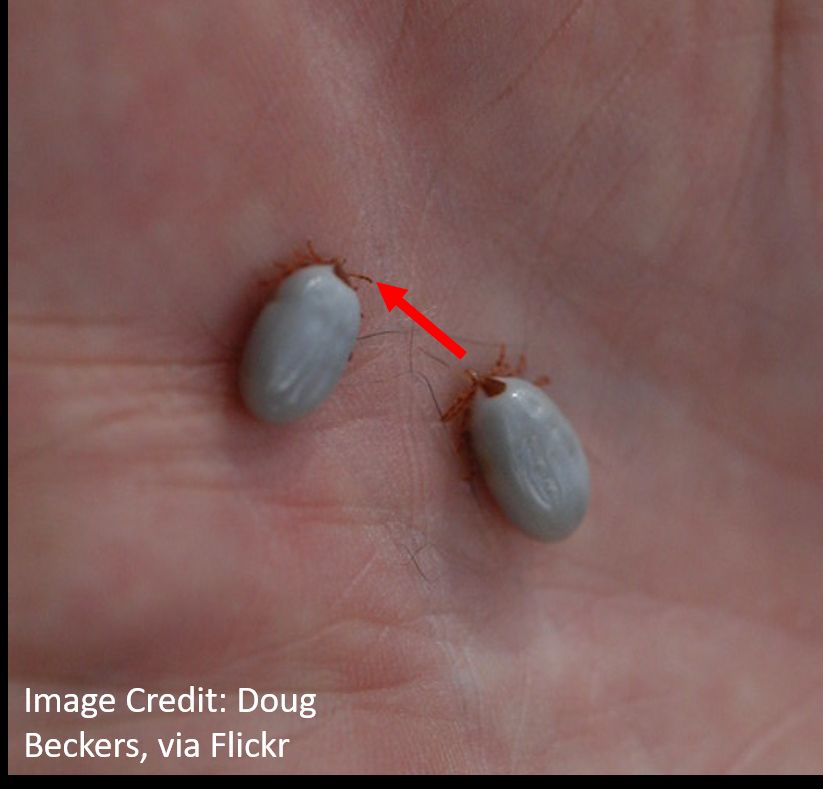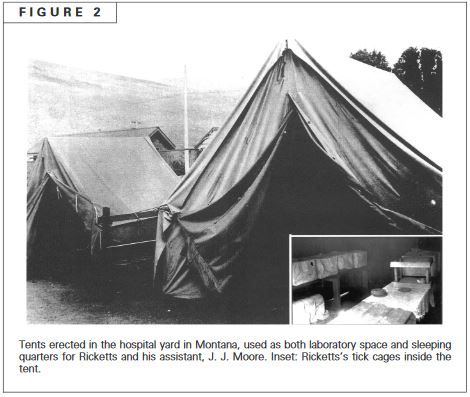www.jstor.org/tc/accept?or...
journals.sagepub.com/doi/full/10....
www.ncbi.nlm.nih.gov/pmc/articles...
nyaspubs.onlinelibrary.wiley.com/doi/abs/10.1...

Since R. peacockii outcompetes RMSF, you get a separation between two close environments.
Since R. peacockii outcompetes RMSF, you get a separation between two close environments.
What hosts the ticks have access to, even the chemicals in the environment from plants, the bacteria the ticks are exposed to, etc can have significant effects on the bacteria inside the ticks.
What hosts the ticks have access to, even the chemicals in the environment from plants, the bacteria the ticks are exposed to, etc can have significant effects on the bacteria inside the ticks.
Anything living inside of them will be exposed to similar environments.
If the tick is cold, so is the bacteria.
If the tick is hot, so is the bacteria.
Anything living inside of them will be exposed to similar environments.
If the tick is cold, so is the bacteria.
If the tick is hot, so is the bacteria.
The difference between the two habitats is still pretty obvious.

The difference between the two habitats is still pretty obvious.
On the West side, there's a lot of mountains.
The East side is flatter, less mountainous, and is just a completely different habitat.

On the West side, there's a lot of mountains.
The East side is flatter, less mountainous, and is just a completely different habitat.
So, if there’s a stronger competitor, why does RMSF even exist if these ticks can easily cross the river on their hosts?
This question hasn't recieved as much attention.
So, if there’s a stronger competitor, why does RMSF even exist if these ticks can easily cross the river on their hosts?
This question hasn't recieved as much attention.
Eggs can’t maintain both bacteria at the same time.
R. peacockii tends to win this fight and outcompetes RMSF when they’re in a shared habitat.
Eggs can’t maintain both bacteria at the same time.
R. peacockii tends to win this fight and outcompetes RMSF when they’re in a shared habitat.
R. rickettsiae makes the ticks really sick, while R. peacockii is less hard on the host.
R. rickettsiae makes the ticks really sick, while R. peacockii is less hard on the host.
The other, lesser known bacteria, is R. peacockii, or what’s called the East Side Agent
Both of these bacteria compete for space in the next generation of tick, but they do so in very different ways.
The other, lesser known bacteria, is R. peacockii, or what’s called the East Side Agent
Both of these bacteria compete for space in the next generation of tick, but they do so in very different ways.
You see, in the Bitterroot valley, there are two different bacteria circulating in these ticks.
You see, in the Bitterroot valley, there are two different bacteria circulating in these ticks.
This is called horizontal, or transovarial transmission.
Both of these are important to RMSF’s survival, because dual transmission increases the chance of completing another cycle in the wild.

This is called horizontal, or transovarial transmission.
Both of these are important to RMSF’s survival, because dual transmission increases the chance of completing another cycle in the wild.
The first one is the one that everyone’s familiar with.
An infected tick bites a host, and passes the germ onto a new generation of ticks when new individuals feed.
This is horizontal transmission.

The first one is the one that everyone’s familiar with.
An infected tick bites a host, and passes the germ onto a new generation of ticks when new individuals feed.
This is horizontal transmission.
Parasites don’t live in an environment free of competition.
Sure, they’re competing with their hosts for nutrients.
They’re ALSO competing with things inside the hosts.
Parasites don’t live in an environment free of competition.
Sure, they’re competing with their hosts for nutrients.
They’re ALSO competing with things inside the hosts.
We still don't actually know.
Let me explain...
We still don't actually know.
Let me explain...
The disease would go on to be well studied, and go by a few other names. However, over time, the scientific community settled on a name originally published in 1903.
Rocky Mountian Spotted Fever

The disease would go on to be well studied, and go by a few other names. However, over time, the scientific community settled on a name originally published in 1903.
Rocky Mountian Spotted Fever
He dissected ticks in the area, found the bacteria.
He also found that he could pass the disease among guinea pigs.
He also found bacteria in tick eggs.
web.archive.org/web/20110722...

He dissected ticks in the area, found the bacteria.
He also found that he could pass the disease among guinea pigs.
He also found bacteria in tick eggs.
web.archive.org/web/20110722...
When Ricketts came to visit he found...ticks.
Lots of ticks. Everyone in the family had been bitten by them.
When Ricketts came to visit he found...ticks.
Lots of ticks. Everyone in the family had been bitten by them.
With few laboratory supplies-all of his experiments were done in a tent-he began to look for the cause of this perplexing disease.

With few laboratory supplies-all of his experiments were done in a tent-he began to look for the cause of this perplexing disease.

